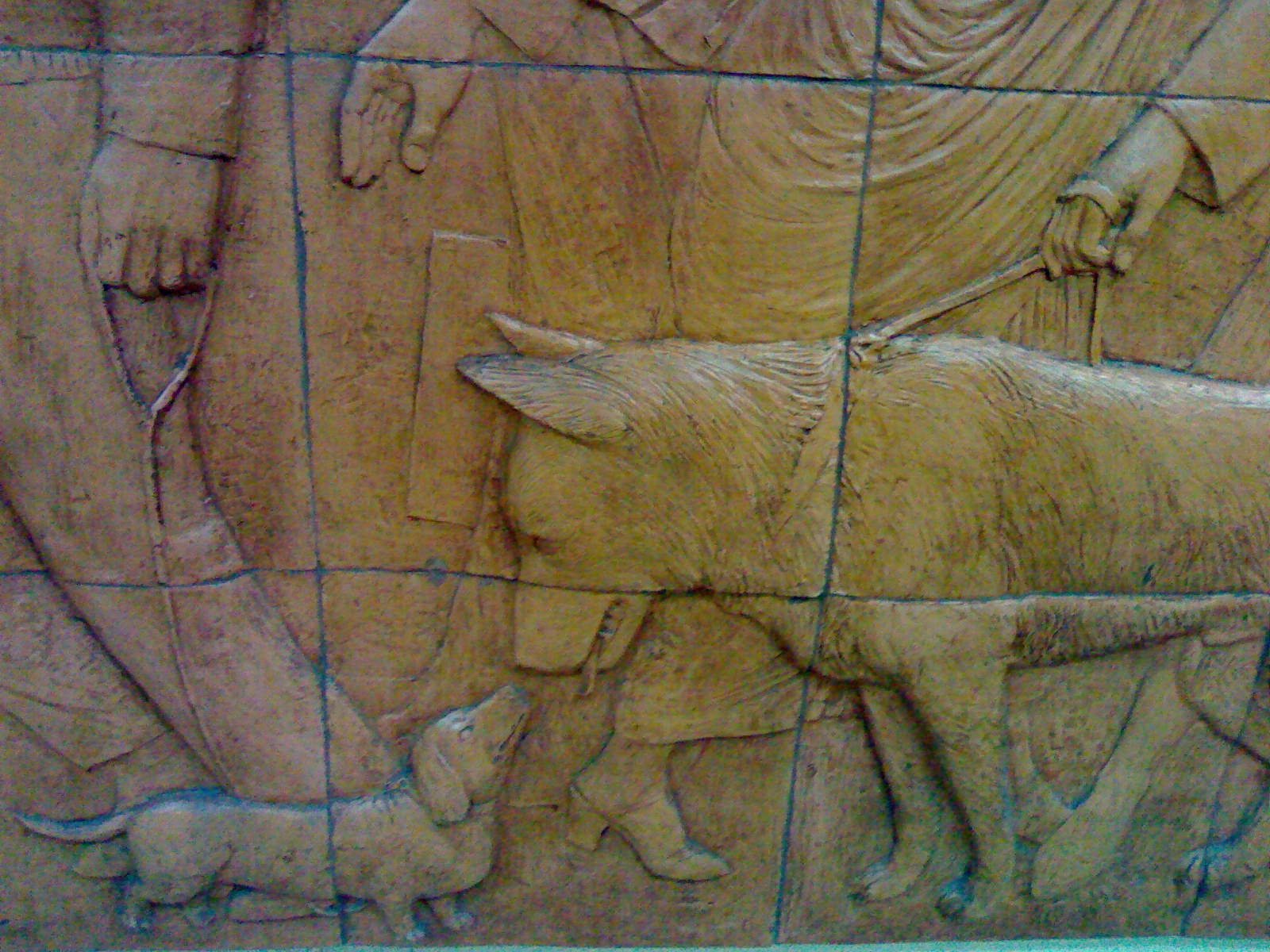While we do advocate for dangerous dog laws here at NoPitBullBans.com, we do so with a little bit of tremulousness. It’s more precise to say we advocate for dangerous dog owner laws. Why? Because many dangerous dog laws still put the onus on the dog instead of its owner.
For instance, if you look at many dangerous dog laws, you will often find language that defines a dangerous dog as one that “attacks without warning.” It would appear that this language is straight out of “studies” like Merritt Clifton’s 2006 “statistical” report called “Dog attack deaths and maimings, U.S. & Canada September 1982 to November 13, 2006” wherein he states,
Pit bulls¦are also notorious for attacking seemingly without warning…(4).
While Clifton is referring to “pit bulls,” if you put that same language in a dangerous dog law and just remove the breed-specific language, it still has the potential to kill or stigmatize dogs needlessly, just like breed-specific legislation (BSL) does.
There is no such thing as a dog breed that doesnt give warning signs before it attacks or that attacks “unprovoked” (and it’s doubtful that there has ever been a dog that has truly attacked without warning or unprovoked). For instance, the parenting section of a typical question-answer website informs parents of the common signs of an impending dog bite or attack ” which can include stiffening, raised hackles, a standing tail, a showing of the whites of the eyes, and of course bared teeth and growling ” adding,
Dogs typically dont attack without warning. In most cases, dogs are sending subtle cues that signal distress before resorting to an attack.
Simply because people may be ignorant of the subtle cues that a dog of any breed may give before attacking, doesnt mean they arent there.
Also, dogs do not attack “unprovoked.” We humans may not be able to discern what provokes some dogs, but certainly there is a provocation there. For animals being challenged by other animals, domestic or wild, the provocation could be a look, a growl we don’t hear, or encroachment on territory or a food source. Again, these are behaviors which a responsible owner is aware of and works with.
Similarly, just as breed-specific legislation targets specific breeds, so too can a vicious or dangerous dog law target a breed or group of breeds for their behavior traits, whether those proposing such laws know it or not. For example, Jack Russell Terriers were bred for traits that would lend themselves to rooting out small ground-dwelling animals and hunting foxes, and they will often go at them with great exuberance. Now, put that same Jack Russell in an urban or suburban setting. Without proper exercise, socialization, and training, that Jack Russell could quite possibly chase cats, birds, or any small furry creatures, domestic or wild. But are we to understand that this now makes them potentially vicious or dangerous?
Jack Russells are in the same group — terriers — as American Pit Bull Terriers, American Staffordshire Terriers, and Staffordshire Bull Terriers (breeds commonly and erroneously referred to as “pit bulls”). Yet the Jack Russell will typically be forgiven its “terrier tenacity” of going at animals — domesticated or wild — while a “pit bull” that goes after small furry animals — domesticated or wild — is viewed as having a breed flaw. This “flaw” is often incorrectly defined as viciousness by dangerous dog laws, which again, can target specific breeds just like breed-specific legislation does, for being “guilty” of nothing more than possessing the very traits they were bred to have; traits which, where they are found, can be used for good or exploited for bad. And if a dangerous dog law doesn’t target specific breeds, then why will a Jack Russell Terrier’s chasing after domesticated animals — like other dogs, cats, or small household pets like ferrets, hamsters, or birds — be forgiven, but a “pit bull” (or Rottweiler, Doberman, German Shepherd, Malamute, Labrador, etc.) doing the exact same thing will be labeled “dangerous” or “vicious”?
Let’s look at another group: the sporting group. People with hunting dogs often spend hours upon hours training their dogs not to eat the quarry that their dogs hunt and/or retrieve. Similarly, hunting dogs are not born knowing that chasing after wild animals is different than chasing domesticated animals; they have to be trained accordingly. A person who does not understand what traits their chosen breed characteristically exhibits may in turn not understand why their dog chases cats, small birds, rabbits, domesticated or wild, but that’s not the dog’s fault, and it’s certainly not the fault of any one breed. Without proper exercise, training, and socialization, or simply keeping the dog away from other domesticated animals if necessary, dogs of any breed can chase, bite, or attack domesticated animals, which is why legislation must focus on the irresponsible behavior of people.
In that vein, it’s also hard to understand why some dangerous dog laws automatically define dogs trained to fight as “dangerous” or “vicious” and therefore not worth saving. Just because some dog breeds hundreds of years ago were bred for traits that might lend themselves to being exploited by dog fighters, that doesn’t make them inherently dangerous or vicious. (And breed fanciers should always make the clarification that no dog is bred to fight. Dogs are trained to fight, and as Michael Vicks dogs showed, they can be rehabilitated and go on to make perfectly pleasing house pets regardless of their history. We also want to make it perfectly clear that we do not in any way condone dog fighting in any form it could take. But as bully breed owners, it is incumbent upon us to know the history of our chosen breeds, if for no other reason than to dispel the mythology surrounding them and ensure that the truth about these breeds is known.) Again, it’s all about what the owner trains the dog to do, whether good or bad, which is true for any breed of dog.
As such, a dog should not merit an automatic death sentence just because s/he has been trained to fight. Just as dogs of any breed are typically temperament tested when coming into rescue, so too are dogs that were once trained to fight. And if Michael Vick’s former dogs are any indication, a majority pass their temperament tests with flying colors and can eventually be placed in loving homes. Indeed, according to the Washington Post,
Of the 49 [Vick] pit bulls animal behavior experts evaluated in the fall, only one was deemed too vicious to warrant saving and was euthanized.
And yet animal rights groups like PETA and the Humane Society of the United States were calling for these dogs to be killed, which many found incredibly unethical, inhumane, and downright sickening. But folks who had worked in bully breed rescue (like yours truly) knew better and advocated for these dogs to be spared. And, in fact, the overwhelming majority of Vicks dogs went on to be rehabilitated, fostered, and even adopted out, while still others appeared in the National Geographic show Dog Town. (Sports Illustrated also did an update on Vicks dogs in 2008 which you can read here.) These dogs should be a shining example that an automatic label of “dangerous” or “vicious” as pertains to dogs trained to fight is a glaring error based on ignorance.
What happened with Vick’s former dogs should also show that some radical animal rights groups don’t have an interest in saving domesticated animals, but rather are on a crusade to eliminate domesticated animals (including even agricultural animals that most of us use for food). In fact, the very animal rights groups that now clandestinely, or not so clandestinely, push breed bans and breed-specific restrictions, were also the ones circulating pamphlets back in the day warning about the dangers of street dog fighting; pamphlets which actually turned out to make good primers on how to train a dog to fight. In other words, a radical faction of the animal rights movement created the very problem they now supposedly seek to correct. Unfortunately, their correction of the problem ” breed-specific legislation ” involves killing a lot of innocent dogs, which not so surprisingly aligns with their agenda to end domestic animal ownership.
You may be asking yourself why these groups are seeking to kill animals instead of saving them. Because of something called nativism. Nathan Winograd, author of Redemption: The Myth of Pet Overpopulation and the No Kill Revolution in America defines nativism as the,
¦belief that the value of an individual animal comes from lineage and that worth as a species stems from being at a particular location first (79).
What Winograd cant or wont say is that some animal rights organizations are adherents of nativism and may not have an interest in saving pets lives, but may in fact be willfully seeking to exterminate them. To many animal rights activists and environmentalists who subscribe to nativism, domesticated pets represent a violation of Mother Nature, or the living Gaia, which to them is the natural order of things.
The essay The Ethic of Care and the Problem of Wild Animals sums the nativist view up tidily:
Without addressing the difficult issue of the rationality of nonhuman animals, the autonomy and independence of at least wild animals can be and has been defended. In fact, environmental ethicists have long emphasized the difference between wild and domestic animals along these lines: Aldo Leopold wrote that the essence of environmental ethics was reappraising things unnatural, tame, and confined in terms of things natural, wild, and free (Callicott 1992, 67). According to environmental ethicist J. Baird Callicott, wild animals are autonomous and independent, while domestic animals are human creations which are metaphysically unfree. By this Callicott means that domestic animals are nothing but what we have selectively bred them to be, such that it is as meaningless to speak of setting free domestic animals as it would be to speak of setting free a chair.
In the minds of many environmentalists and animal rights activists, since you cant set domestic animals free (after all, they are, according to them, unnatural human creations), you must necessarily humanely euthanize them. So, in their view, in order to return to the natural order of things, indigenous species should take precedent over human encroachment, which includes human domestication of animals, because wild (i.e. natural, indigenous), animals were there first.
When you wrap your mind around the concept of nativism and the resultant intentional killing of domesticated pets by radical animal rightists, the agenda becomes undeniably clear: a willful extermination campaign is underway to eradicate the existence of domesticated animals worldwide (including agricultural animals). So when a dangerous dog law labels a dog “dangerous” under the false belief that dogs attack without warning or without provocation, or because the dog attacked another domesticated animal, that dangerous dog law has denied the very nature of dogs. In this way, dog ownership becomes so heavily and unnecessarily scrutinized that it’s a wonder any dog could survive it. Indeed, if you view dangerous dog laws in light of the definition of nativism and you know that a radical faction of the animal rights movement actually seeks to exterminate domesticated animals, not save them, then you can see how the typical dangerous dog law could be comparable to breed-specific legislation.
It’s odd too that while breed bans and breed-specific restrictions are now globally recognized as being ineffective legislation, dangerous dog laws that typically still put the onus on the dog instead of the person owning it, are gaining in appeal. As such, it is our stance that municipalities should be passing dangerous dog owner laws, not dangerous dog laws.

